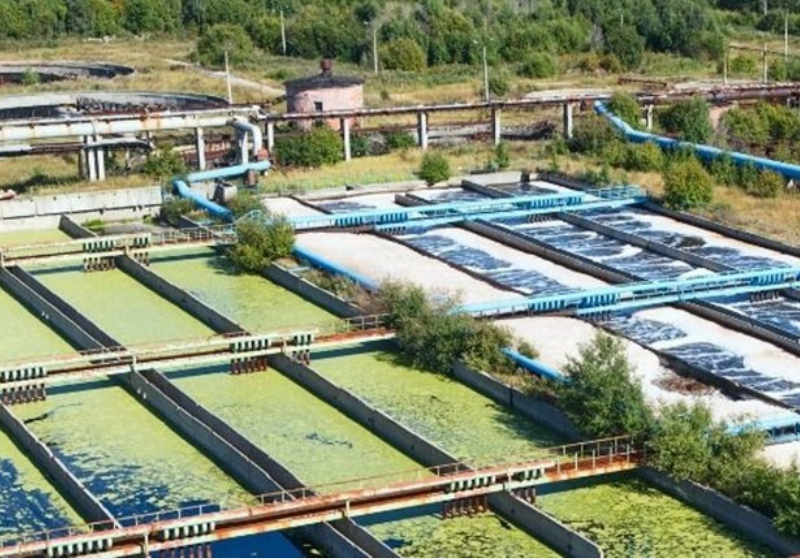Saponin Processing Wastewater
There are up to 12 kinds of typical sewage. We are committed to providing sewage/ sewage treatment solutions for hospitals, factories, and enterprises. Saponin production wastewater is characterized by high chroma, high concentration of organic matter, high acidity, and high temperature. Thus, this information about Saponin Processing Wastewater will provide you with ideas.
What is Saponin Wastewater?
The raw materials for saponin production mainly include ginger, Dioscorea nipponica, cucurbita, etc. Its main components are starch, cellulose, glycoside and lignin.
The production process is to pretreat the raw materials by water immersion, crushing, fermentation, etc., add 3% dilute sulfuric acid or dilute hydrochloric acid to hydrolyze. After filtration, sugars and other substances are discharged with the filtrate, and the filtrate is lignin and saponin insoluble in water. After neutralizing, rinsing, crushing and drying the filtrate, extract the saponin from the filtrate with 120 # gasoline. The extract is recrystallized, filtered and dried to obtain the saponin product, and the saponin extraction rate reaches 90%.
The wastewater in the process of diosgenin production mainly comes from the wastewater generated after acid hydrolysis and filtration, as well as the comprehensive wastewater generated after neutralization and washing.
Characteristics of Diosgenin Production Wastewater
The composition of diosgenin production wastewater is complex, the acidity is high, the organic content is high, the water body is dark brown, and the water contains a considerable amount of diosgenin and surface active substances that are difficult to degrade, which belongs to high concentration organic industrial wastewater.
- Poor biodegradability.
- The sugar content is high, and the total sugar content of the comprehensive wastewater is about 2%, most of which are monosaccharide.
- COD in the pollution load is 20000mg/L~40000mg/L (comprehensive wastewater).
- High acidity and salinity.
- The pigment is thick and rich in a large amount of denatured pigment.
- The colloid is heavy, and the colloid in the first waste liquid is about 8%.
- The foam is very large during the treatment process, which is very difficult to eliminate.
Treatment Methods of Diosgenin Wastewater
1. Combination of Physical-chemical Pretreatment and Biochemical Treatment
The diosgenin wastewater is treated by physical and chemical pretreatment process and then treated by the hydrolysis-anaerobic-aerobic process.
2. Neutralization - Anaerobic Biological Treatment (UASB) - Aerobic Biological Treatment (SBR)
High-concentration saponin wastewater is rich in acid and starch is converted into sugar after hydrolysis. A certain amount of starch raw material is added to hydrolyze starch into reducing sugar under strong acid and high temperature and pressure conditions, and then alcohol fermentation is carried out to produce alcohol.
3. Two-phase Anaerobic+Aerobic Combined Process
The key technology of the diosgenin wastewater treatment process is the anaerobic digestion process. The diosgenin wastewater has a high acidity, a pH value of about 1.0, and contains excessive sulfate ions. Pretreatment must be carried out before biochemical treatment.
4. Other Treatment Methods
Absorption biodegradation method (AB method), sequencing batch activated sludge method (SBR), up-flow anaerobic sludge bed reactor (UASB)+SBR process, UASB-biological contact oxidation-flocculation sedimentation method, etc.
Knowledge of typical wastewater sewage water
|
There are 12 kinds of typical wastewater sewage water:
|
Tips to select sewage treatment plant
The main pollutants of saponin production wastewater in the treatment route of saponin wastewater are hydrochloric acid and sugar, which are treated by an anaerobic-aerobic biochemical method to meet the requirements of the influent water quality of the secondary sewage plant. As a sewage wastewater treatment plant for home&industrial, we suggest that the saponin plant can consider sewage discharge into the sewage treatment plant.
#QDEVU #WATERTREATMENT #WASTEWATERTREATMENT #SEWAGETREATMENT #SEWAGEWATERTREATMENT #BIOLOGICALTREATMENT #ACTIVEDSLUDGE
Visit www.evuchina.com for more information!



